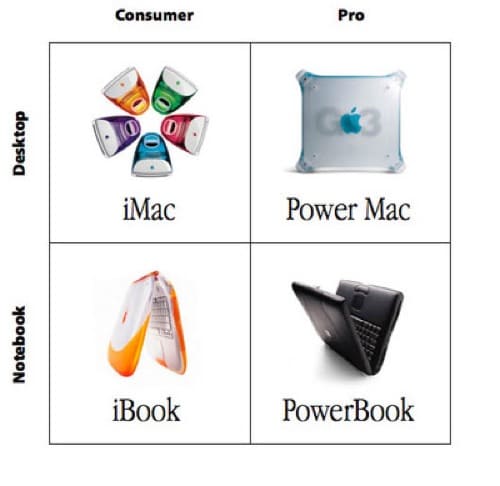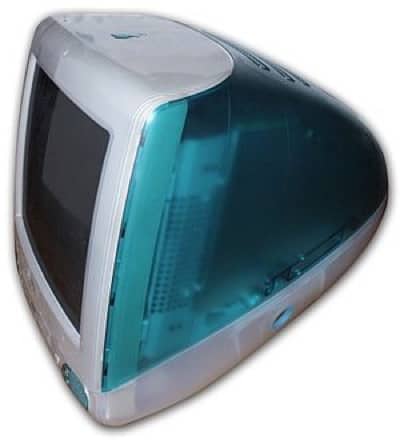Apple’s Product Line is Complex. And it’s Perfect
Some might insist that Apple’s product line has become bloated. Actually, it’s perfect.
Twenty years ago, Apple was faltering. It’s too many Mac products were poorly designed and picking the right one from a myriad of models was confusing. Steve Jobs realized, correctly, that Apple needed to focus on a few brilliant products that were compelling to the customer.
He created the now legendary 2 x 2 product matrix. Here it is.

The legendary Steve Jobs 2 x 2 product matrix.
Ever since then, for twenty years, Apple’s product line has been growing. And for twenty years, some have longed for the simplicity of that uncomplicated matrix.
And so, the modern question is this: is Apple’s product lineup too complex?
- Why is the MacBook Air still shipping amidst the superior MacBook?
- Why does Apple need a headless, 2018 Mac Pro?
- Why are there so many iPhone models, both current generation and the reduced-priced older generations?
I could go on, but that’s the gist of it.
Size Matters
When Steve Jobs created that basic product matrix, Apple was floundering. Just making payroll was dicey. Bankruptcy was looming. Apple has to come up with a blockbuster piece of hardware, designed by his “A” team, a new Mac, that would blow our socks off. And that’s what Apple did. In August, 1998, Apple introduced the Bondi blue iMac designed by Jonathan Ive. It was smooth, warm, easy to handle, drop-dead gorgeous. And easy to get on the internet. Back then, merely doing that was a hassle.

This 1998 iMac saved Apple.
That iMac, and its brethren in the matrix, saved Apple. Engineers could focus on the Next Great Version of a few products instead of having their efforts diluted amongst many projects. And fiefdoms.
Does that apply today? I would arge that it doesn’t. Apple is roughly forty times bigger now, in revenue, than it was in 1998. It’s customer base has expanded from Macs only into iPhones, iPads, music, audio products, wearables, television and services.
The scope of Apple’s customers has changed. Apple went from being a boutique UNIX computer company to a consumer electronics powerhouse.
Sure, there are products that Tim Cook has said “No” to, following the path of Steve Jobs.
But Apple has also found out, like all consumer electronics companies, that if you leave significant gaps in the product lineup, the competition will move in hard and fast. Growth is threatened.
Apple has discovered that as it has taken the iPhone global. Price-points, colors and features don’t fit uniformly across international boundaries.
Apple discovered that when it allowed the 2013 Mac Pro to linger, dying on the vine whilst HP and Microsoft saw an opportunity to steal technical and creative professionals. And even if Apple doesn’t sell a lot of Mac Pros, that model serves as a halo Mac, a line in the sand, a statement about Apple’s willingness to compete for the hearts and minds of the pros who select their own displays.
Apple discovered that the sleek MacBook fell flat when it came to education. Its advanced, single USB-C port was just too exotic for students looking for an affordable but quality notebook that spoke to them in UNIX-speak. So long as students and educators keep buying the MacBook Air, Apple will ship it.
By The Numbers
Apple not only looks at sales numbers, but it also looks at the varying needs of its spectrum of users. To be sure, if it can’t do something well, it’s wise to disengage. But a company of Apple’s size means that it must engage customers in as many ways as practical or risk losing them in the heat of competition. Growth is at stake.
And so, given the success of Apple, its staggering revenues, profits, and market cap, there’s a case to be made that Apple’s product line is as simple as it can be, but no simpler.
0 Response to "Apple’s Product Line is Complex. And it’s Perfect"
Post a Comment